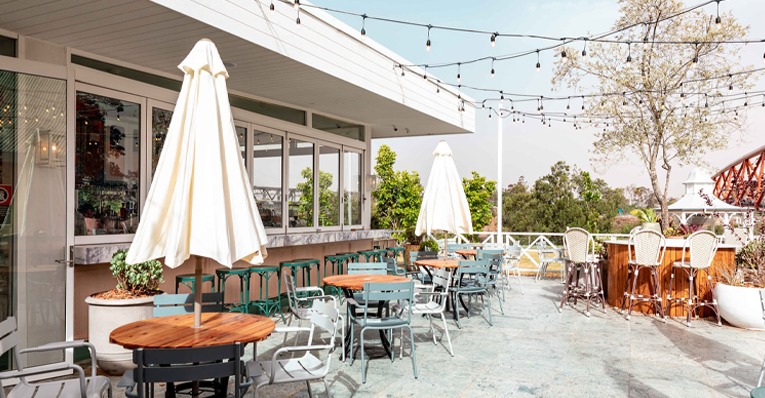When your lifelong dream of opening your restaurant finally materializes and you’re becoming your own boss there are several factors to keep in mind while starting a new restaurant. It is crucial to keep your finger on the pulse of your money in financial matters; poor financial planning is one of the top 3 reasons for a business to fail. What differentiates a struggling and thriving business is effective financial planning that brings clarity on budget to various processes in your restaurant.
The common ways to raise capital include, self-funding, bootstrapping, loans from friends and family and some ways to fund for operations include, supplier credit, discounting on bills for bulk purchase, advance against POS and bank.

You should conduct a break-even analysis before launching the business (Gross Margin = all the fixed expenses) to estimate the target business revenue to cover all the fixed expenses. Projecting your capital and ongoing expenses will give you a clear overview of the capital required to start your business and cash reserves required to run the business effectively.
In addition, when you’re planning to raise capital for your business in afore mentioned ways, having a clear business plan and a financial projection instills credibility in the investors.
Before we dive in and discuss the various costs and expenses to be estimated before starting a restaurant, let’s look at the fundamental difference between costs and expenses.
Your restaurant costs include one-time expense like cost of buying/constructing a building, kitchen equipment, furniture, dishes, aesthetics, vehicles and so on. And, restaurant expenses include, monthly or regular expenses like, rent, food costs, payroll, marketing, utility charge, expert consultation charges etc.
We are primarily going to understand 3 types of costs to estimate the budget for your business:
- One-time cost
- Fixed cost
- Variable cost
1.One-time Costs: These include costs that don’t incur on monthly basis and occur only when starting the business or when the business undergoes major restructuring. The costs include:
- Building deposit
- Real estate cost
- Renovation & décor cost
- Furniture cost
- Tableware cost
- Restaurant technology (includes Point of sale system, kitchen display system, employee scheduling system, reservation tool, building own website etc.)
- Hardware costs (printer, desktops/laptops)
- Unforeseen contingency (construction mishaps, electrical or plumbing rework etc. and hidden costs in payment processing)
2.Fixed Expenses: Expenses that don’t change from time to time and remains the same regardless of production.
- Rent and building fees
- License fees
- Insurance coverage
- Marketing costs
- Staff salary
- Online ordering system monthly subscriptions
- Interest paid on bank loan
3.Variable Cost: Expenses that change month-on-month based on business production.
- Utility costs (electricity, water, mobile phone, internet etc.)
- Cost of food ingredients
- Payment processing fee (varies based on the number of orders)
- Food aggregator charges
- Employee training charges
- Freight & handling cost
- Consultation charges; subject matter expert, auditor, legal consultant etc.

Use a software to monitor the inventory trends and plan your inventory periodically. Negotiate with the supplier for discounts on bulk pre-orders based on the demand for ingredients and request for food to be delivered periodically than at one go; to ensure you receive fresh stock.
Now, that we have looked at the costs to consider while opening a restaurant, lets us now look at the key performance indicators, which are metrics to be measured every week to check if the business is line with the short-term goals. If the KPIs indicate the business is not performing as expected, then it is important to monitor the reason for slow sales; is it because of the menu? High supply cost? etc. and restructure the business to align to the goals.
1.Cost of Goods Sold/Food Cost Percentage: The total cost of ingredient in making the goods is measured with total sales to understand the food cost % on total sales.
Cost Of Goods Sold % = (Opening Inventory + Purchases – Ending Inventory)*100/Sales)
- Opening inventory: Value of food ingredients purchased at the beginning of the week
- Purchases: Food ingredients purchased during the week
- Closing inventory: Value of food ingredients at the end of the week
Ideal to maintain food cost between 30-35%
2.Prime Cost: Prime cost is the total cost of the goods sold on total sales.
Prime Cost % = (Cost of Goods Sold + Labor Cost) *100/Sales
The ideal prime cost to maintain for a restaurant is between 55-60%
3.Gross Profit: Total sales recorded during a particular time.
Gross profit = Total Sales – COGS
4.Turnover rate: Calculates the number of staffs that has left the business.
(Total number of employee who left the restaurant*100)/Total no. of employees in your restaurant during a particular period
5.Labor Cost:
Labor Cost = Total Labor*100/Total sales
6.Number of Guests Served/Per-Server/Per-Hour :
To understand the efficiency of each staff at your restaurant and the need to hire or dismiss staff is calculated. Also, requesting for the guest feedback helps in accurate measurement of services.
Number of guests served per day = Total Number of Guests Served/Number of Service Hours Worked.

Most companies that cross the five-year mark are restaurant owners that assess the internal goals of the business as against industry benchmark from time to time. The metrics don’t just list the areas that perform well but also areas of improvement.
In the domestic UAE market, food aggregator Talabat recorded 90% year on year growth due to rising number of cloud kitchens in 2021. With restaurant sector growing rapidly and with cloud kitchen disrupting the market, it is important to measure your business from time to time. Also, many cloud kitchens closed in UAE due to incompetency in operations, aggregator fees and lack of supply chain knowledge.
And, restaurants in general are closing because of ineffective business plans that in turn provide unrealistic financial estimation, which leads to a business closure due to lack of business capital. Have a strong team of financial analysts or a team of tool to carry out business financial analysis on regular basis to thrive in the highly competitive market place.
Please reach to our mentors from the below links:
https://jupiterbusinessmentors.com/business-coaching-consulting-mentoring.html




